Bob Hill: Who's preserving Harlan Hubbard's beloved Payne Hollow?
A fine history is brewing in Payne Hollow, a sloping, remote, rugged piece of forested land along the Ohio River in Trimble County Kentucky about 45 miles upriver from Louisville.
Payne Hollow was once the isolated home of Anna and Harlan Hubbard, two thoughtful people with a love for music and rare books whose lives on a river shantyboat and then in the Kentucky woods speaks of Thoreau, Walden Pond, Rachel Carson, Wendell Berry and, oh yeah, a herd of goats, hand-tended woodland gardens, fish nets and a bee hive.
The bee hive was a last minute addition to the shantyboat Harlan Hubbard built before the newlywed couple – with Harlan’s violin, Anna’s cello, hundreds of pages of their sheet music and books on board – floated down the Ohio and Mississippi Rivers for five years from Brent, Kentucky to New Orleans, some 1,385 miles.
Or maybe about 275 miles a year.
That river voyage was just the beginning of their life’s journeys. After it they returned to Payne Hollow to live off the land for 35 years in a house Harlan built of wood and stone, no electricity and only cistern water. He added a shed, workshop, studio just up the hill where Harland created hundreds of his works in oil, acrylic, watercolor, charcoal, graphite and woodblock.
Anna had her Steinway piano shipped from her childhood home in Grand Rapids Michigan to their rough-cut Payne Hollow dwelling, the final mile of the journey the piano carried by six men down a steep dirt path from the nearest road to their house on the Ohio.
The Hubbards often played music together on the shantyboat and in Payne Hollow. They read classical books to each other, Walden Pond among them. Their library also included Chaucer, Emily Dickinson, Bach and Proust. They sometimes read in French, or, with Shakespeare, read parts from a play, each acting out a role.
You may also enjoy:A tale of two Thanksgivings: Why Kentucky didn't always celebrate in November
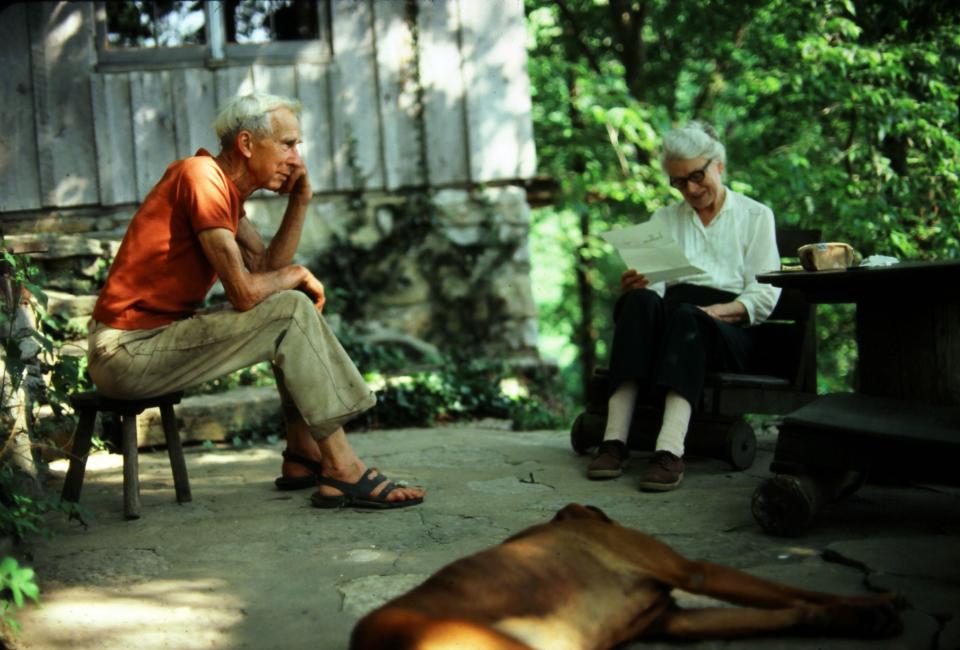
They would eventually enjoy the company of many welcome visitors who admired their lifestyle but never really understood what it required. A few of the guests would play instruments with them on the river and later at Payne Hollow while sitting on their porch or rocky ledge, their music drifting down the slope toward the Ohio.
Their unique lives and home offer a story worth telling and preserving, and that’s now being done through a group called Payne Hollow on the Ohio, which has recently purchased their house and adjoining property.
Married in middle age
The Hubbards first met in middle age and would be together more than 40 years. If their story becomes a movie – and there should be a movie – think of their strong-willed lives being portrayed by Meryl Streep and a latter-day Henry Fonda.
Harlan Hubbard wrote a book of their journey: “Shantyboat – a River Way of Life.” In its forward Wendell Berry, a friend and admirer of the Hubbards wrote “They lived largely without benefit of the roads, machines, utilities, communications, comfort and the “labor savers” that pass with us for modern civilization. Their life is comely, orderly, ceremonious, full of health.
“Though their days are necessarily strenuous, they are also leisurely, allowing time for painting, reading and writing, talking pleasure, entertaining visitors. Their life, in short, was exquisitely and deeply civilized, for reasons and by means our industrial technology holds in contempt.”
Anna Wonder Eikenhout Hubbard was born in 1902 into a middle-class family of music-lovers who would often vacation on the state’s many lakes. She was a quiet, reserved, strong-willed woman who became an honors graduate from Ohio State University, a skilled pianist and an avid reader in three languages. She later became a fine arts librarian at the Cincinnati Public Library.
Harlan Hubbard was born in Bellevue in Northern Kentucky with an early, precocious interest in the ebb and flow of the Ohio River and its muddy, forested surroundings. After the death of his father in 1907, a house painter, handyman and inventor, Harlan and his mother, Rose, moved to New York in 1915 to join his two brothers.
Once there a growing interest in art led him to trips to the city’s museums, sketch book in hand, and then enrollment in the National Academy of Design while working summers in Upstate New York as a farm laborer. In 1919 Harlan and his mother returned to Fort Thomas Kentucky where Harlan, inheriting skills from his father, found work as a carpenter and built a house for his mother and a separate studio of brick.
He enrolled in the Cincinnati Art Academy, made some attempts to sell his work while at the same time taking long solitary trips along the Ohio River. New York soon was history. He enjoyed exploring the rural landscape, talking with farmers, fisherman and the residents of shantyboats, those small, often crude, hand-built houseboats that provided floating, inexpensive homes for poor families, the displaced and the many eccentric inhabitants of the river culture that became part of his life.
More:How this family's bar tells the story of a father's resilience in World War II
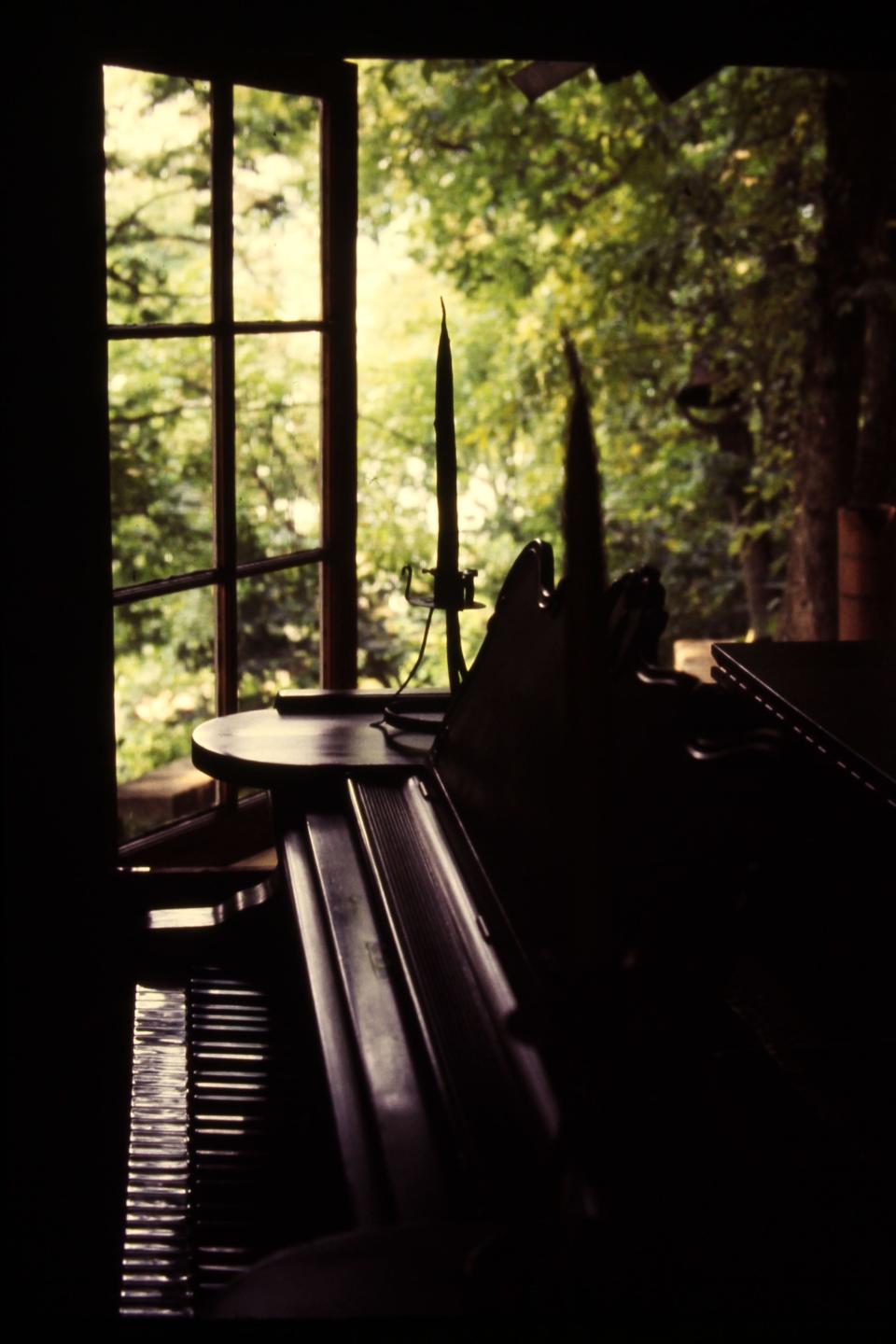
Hubbard’s varied interests often took him to the Cincinnati Public Library and the quiet presence of Anna Eikenhout. Over the years they spoke of their love for music and Anna invited him to her apartment she shared with her sister to join in a duet – he with a violin and she on the piano. The results would speak to their more than 40 subsequent years together.
“The music did not go well at first,” Harlan would later write of their duet, “but we got along well in other ways. I derived a strange new pleasure in playing with the piano, the two parts intertwined and supported reach other.
“Anna was a wonderful accompanist. That was her strongest point, really. She never lost her place and she never lost me.”
On their first date, Harlan took her to a bench high above Cincinnati to share with her the view of the Ohio River. They sat there together and ate a lunch he bought along in a paper bag. What followed were other trips along the river, Harlan talking about his wish, a need really, to someday float down the river, to live in the woods and away from the tangles of society.
“She seemed to take to the river,” he would write, “and for many other reasons I soon came to respect her. I respected her intelligence and consideration. Somehow she reminded me of a character from Jane Austen. And I think she would not mind me saying that because she enjoyed reading Jane Austen and we often read her novels together…
“Anyway, I kept learning new things about her. I felt from the beginning that we’d made a go of it and it would last a long time, and we would be happy.
“And that’s the way it was.”
Newlyweds in Northern Kentucky
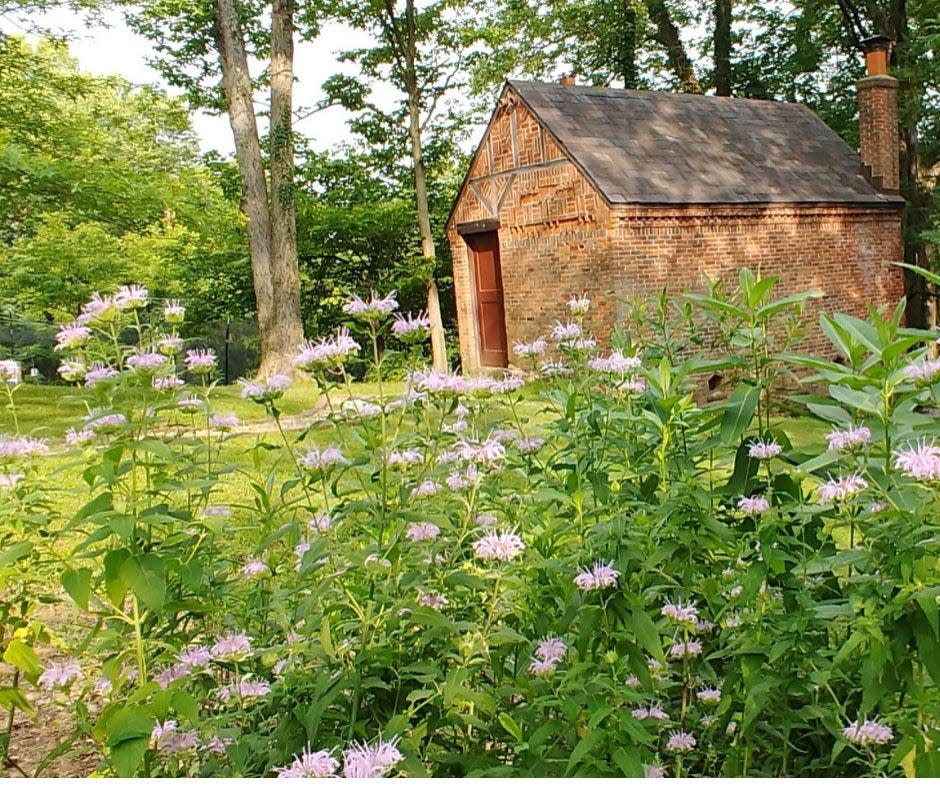
They married on April 20, 1943, when Harlan was 43 and Anna 39. Their wedding would be in a courthouse in Maysville, Kentucky, a 50-mile railroad trip on a commuter train carrying mail. While waiting to catch the train back home after the ceremony, they built a little fire along the track and had hot cocoa.
Their first home was the brick studio in the backyard of his mother’s house. She had been ill, and after her death, thinking about their future together, it was Anna who first suggested Harlan build that shantyboat he had dreamed about for years and together they would float down the river.
He would build it at the bottom of a steep bank of the Ohio River below Brent, Kentucky. They first lived in a pup tent until Harlan could construct a shack for them above the river from boards, flooring and roofing he later used in the boat. Old boards and debris such as cupboards that floated past in the river were also found useful in the construction. The work, from “dark to dark,” went slowly, was difficult, but life in their shack was better.
“The shack, where we had supper as usual by an open fire was always so pleasant, with warmth and good things to eat. Above that was all comradeship, quiet talk, perhaps none at all, sometimes serious discussion, often laughter – it would sound strange to a solitary wanderer on the beach at night.”
It would be two difficult years of construction before they left Brent to just float down two mighty rivers. The timbers for the shantyboat’s hull - 20 feet long, 15 inches wide and three inches thick - came from an old building being torn down in Covington. In time, as a 10-by-16-foot cabin with eight-foot windows was built on top of the hull, the Hubbards moved down from the shack into the cabin, heated by a wood stove but no running water.
Hubbard also built a “johnboat,” a flat boat with square ends including oars for the necessary trips to shore. The johnboat proved very useful several times when Hubbard had to attach it to the shantyboat with a rope and row it back on course, or out of harm’s way with Anna on deck helping to steer.
Every possible need – bed, bedding, bookshelves, bicycle, clothes, cook stove, dishes, pots, pans and privy were engineered into the cabin. Their clothes were washed by hand every two weeks and hung on lines on the deck, or on nearby trees when they stopped.
They planted a vegetable garden on a nearby hill near Brent, caught fish and picked wild berries. They added a bee hive and a stray dog named Skipper, who would have nine litters of puppies and almost 50 pups in their five-year journey, all conceived in the Hubbards lengthy stops along the shore and then given to anyone they met seeking a pup.
Life on the Ohio River
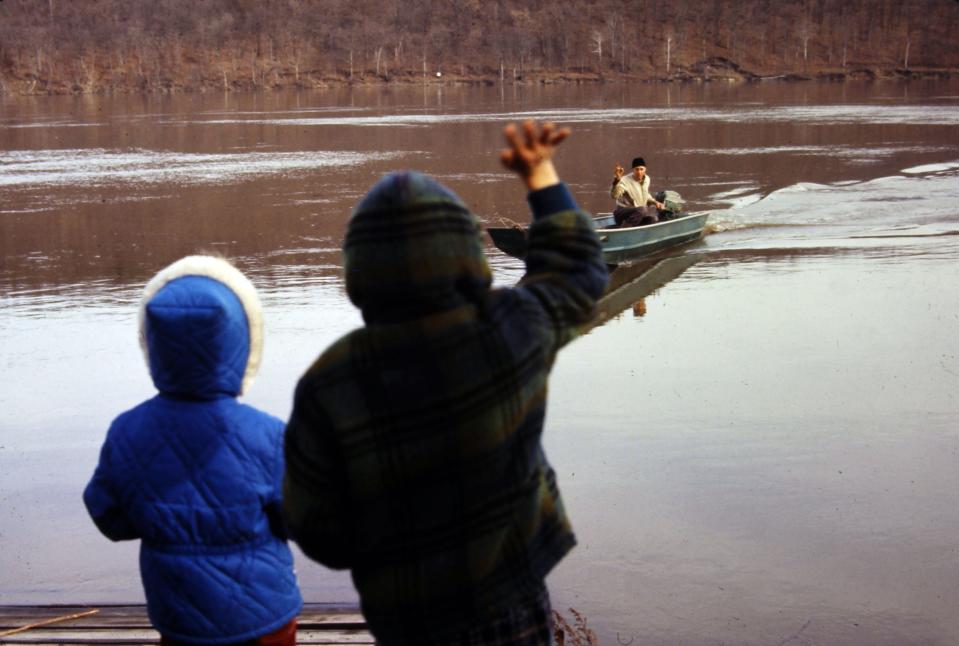
On Dec. 22, 1946, they finally set themselves free to travel downriver, destinations unknown, a continual learning experience with no set schedule. One early stop was at Payne Hollow, a place they found welcoming and useful with its running spring, flat areas for a garden and welcoming landowners higher up the hill. The Hubbards docked their shantyboat lived in the hollow “a long summer,” canning and preserving food for their trip – and would later return.
They floated as the spirit and river moved them, stopping at Six Mile island and Beargrass Creek near Louisville in December, 1947, where they did some Christmas shopping. In leaving town, Harlan pulled the shantyboat by rope through its locks and dam.
Continuing downriver, they reached Evansville by February 1948. From there they stopped for weeks at some places, for months in others, once renting land for 50 cents a week, occasionally taking breaks to visit relatives back home.
They somehow arranged mail pick up in bigger towns. They planted and tended many gardens along the way, enjoying the welcoming river culture, making friends at all stops, forever searching for firewood for their stove, trading fish for food, then food for fish, reading, playing music. Harlan stayed busy painting and sketching, capturing the evolving landscapes, the water and sky. Some paintings were sold for little money and others traded for things needed. Harlan would later estimate his yearly river-travel income at $400 - barter was the best way to travel.
“Spend little and you will have plenty,” he explained.
Barges passing in the night would heave big waves at them. They would spend nine months docked near Bizzles Bluff on the Cumberland River in Western Kentucky while visiting the friendly locals.
The Mississippi River, labeled “graveyard of fools,” proved to be more of a beast, with both Hubbards continually watching the currents, the ever-changing channel and quixotic winds for long days at a time. They were often pulled to safety by other voyagers with motor boats. At one stop near Natchez, Mississippi Harlan suffered a ruptured appendix and had to row himself five miles in his johnboat to find help and a hospital.
The Hubbards finally reached New Orleans and the Intercoastal Waterway in May 1950. They stayed near there until July 1951, then sold the shantyboat, bought an old car and toured the American West before returning home to Kentucky.
Payne Hollow
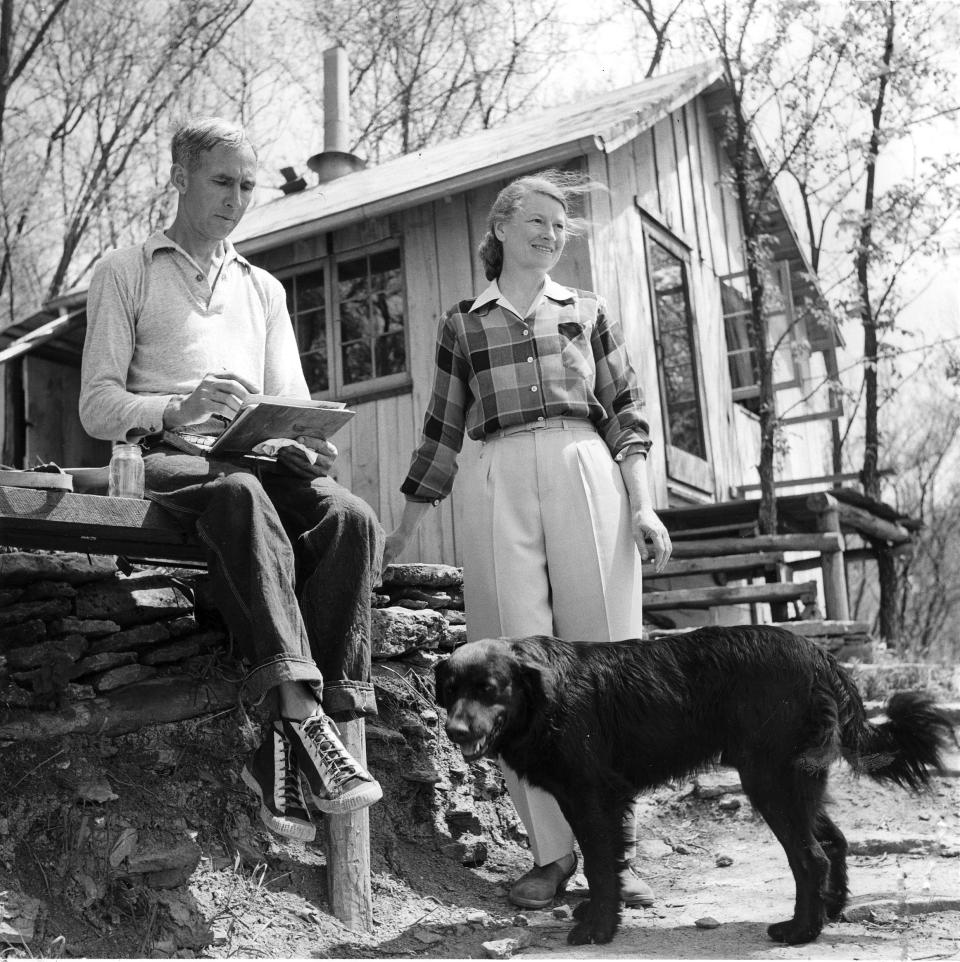
Once there, they were immediately determined to find on land the same peace and solitude they had found on the river. Some exploration led them back to Payne Hollow. In early 1952 they bought “seven acres more or less” for $300. They would live there in steady work and quiet happiness.
Hubbard would write of this stay in another book, “Payne Hollow.” He purchased exterior lumber for their Payne Hollow house from a local sawmill. His mode of home construction was that of building a barn; corner posts of locust trees cut down on the property and placed on flat stones near a low stone wall. Hewing was done with a broad ax. He fashioned a broad space in the cool area below their house to store canned jars of poke, blackberries, honey distilled from nearby maple trees, potatoes and goat meat from a herd of free-ranging goats.
Their temporary refuge during house construction was an unused tobacco barn up the hollow, then an old trailer. Further up the hill from their house he built a separate structure; a studio, shed and work area.
A stone fireplace was built in the house. A stove added. More firewood needed. Creek stones were found for a huge fireplace and hearth. With no electricity, a small gasoline-driven pump was added to feed spring water into a concrete tank above the house. Gravity helped with final delivery.
Their house’s interior living area designed as tightly as the shantyboat with hidden bed, bookshelves and cupboards. Best of all were the large windows that provided views of their outside world - the river.
“Our house is larger now,” Anna would say of the house when compared to the shantyboat, “but it hasn’t changed.”
A wheelbarrow was the year-around work cart. A plunge in the Ohio River after the work was often needed to cool down. The routine became familiar - food to be processed and cooked, violin and cello to be played at night, books to be read by candlelight, conversation and laughter, all the while the Ohio River floating past in the darkness below...for 35 years.
The Hubbards existence was isolated, bur hardly lonely. They had many visitors, including hundreds of students from nearby Hanover College in Indiana, where the Hubbards would also visit and which would become a repository for many of Harlan’s paintings.
To get there, the Hubbards would row across to the Indiana shore where their car was parked and drive up to Hanover. Harlan would also row across the river to pick up guests, who would signal their presence, and he set up a mailbox on the Indiana shore to send and pick up their mail.
The Hubbards’ story was well documented. Anna Hubbard is remembered with a collection of her journals at the Behringer-Crawford Museum in Covington and a book, “Out of the Shadows” by Mia Cunningham. Many of Harlan’s paintings are there, too.
Louisville filmmaker Morgan Atkinson created an artistic 50-minute film on the Hubbards, “Wonder – The lives of Anna and Harlan Hubbard.” It tells their history as narrated by Wendell Berry and with musical score by Ben Sollee. A pedestrian bridge across the Ohio River in Madison Indiana, also a favorite stop for the Hubbards, was named in honor of the two.
Preserving Payne Hollow
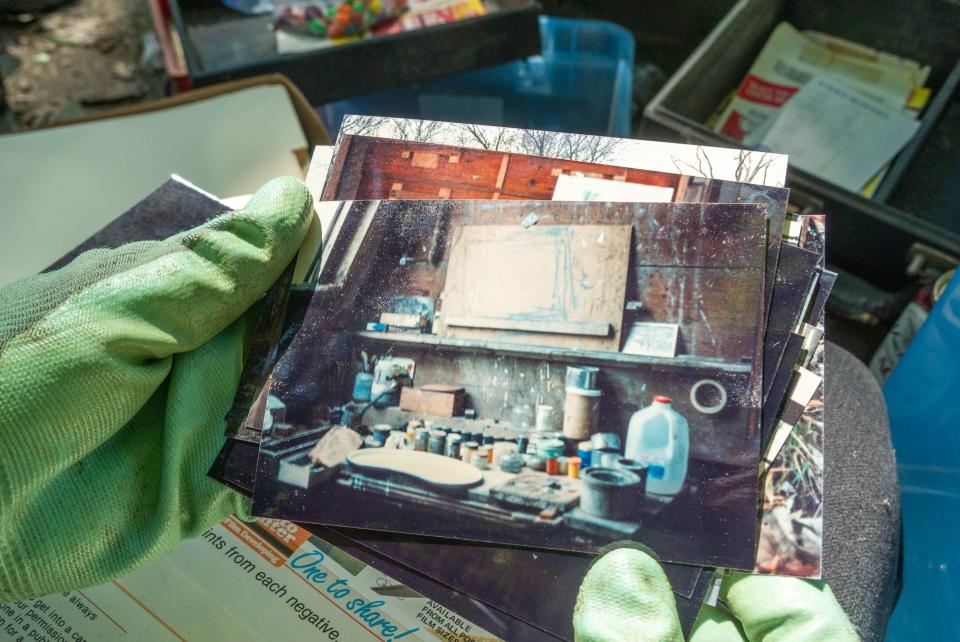
When Anna died in 1986 and Harlan in 1988, their ashes were buried at Payne Hollow. Their land and property were left to a long-time friend and dedicated caretaker Paul Hassfurder. But in the more than 30 years since, Hassfurder, who later was dealing with medical issues, was unable to regularly maintain the Hubbard house and studio.
The buildings beginning to tilt and decay. Rodents broke in, chewing through valuable documents, pushing items off shelves, creating debris and leaving a filthy mess. The Steinway piano was removed after Anna’s death.
Learning of the property’s slow decay, a group of local and regional historians, environmentalists and admirers of Anna and Harlan Hubbard recently formed a nonprofit organization called Payne Hollow on the Ohio. It raised $225,000 to buy what is now 60 acres of Hubbard property, with more fund-raising efforts coming to secure the property, stabilize and repair the buildings and document and restore a valuable Kentucky site with hopes of getting it on the National Register of Historic Places.
The group has already visited the house and studio several times, cleaning up the grounds, hauling off trash, seeking and preserving historical artifacts while experts began studying and documenting the flora and fauna in Payne Hollow.
The goal is to honor the Hubbards’ place in American history, develop a stewardship plan that will include creating educational materials about them, honor their legacy and offer the appreciation they deserve. The tricky part will be to create a way to allow visitor access to what remains a remote area while still protecting the quiet environment Anna and Haran Hubbard had always cherished.
A recent personal trip, and just being in the house, looking at all the remaining books, the cluttered shelves, the timbered walls and floor, the view out the window of the trees and river, offered a deep sense of what their lives were like and what needs to be saved.
“Payne Hollow on the Ohio is at the confluence of art, culture and the environment along our waterways” said David Wicks, an adjunct U of L professor, environmental activist and chairman of the Payne Hollow on the Ohio organization. “As Harlan Hubbard has written, there are few wild places left on the Ohio River and we plan on preserving the Hubbards small corner of the world; a place for creative and reflective kindred spirits.”
More information is available at www.paynehollowontheohio.org/take-action.
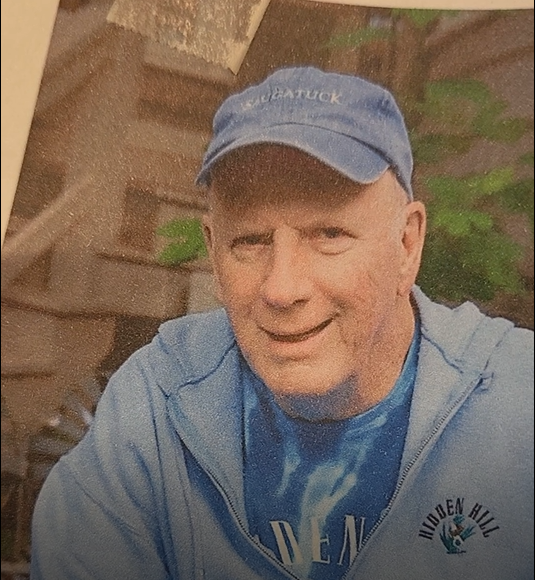
Bob Hill was a Louisville Times and Courier Journal feature writer and columnist for 33 years.
This article originally appeared on Louisville Courier Journal: Kentucky's Thoreau: Preserving Harlan and Anna Hubbard's Payne Hollow

